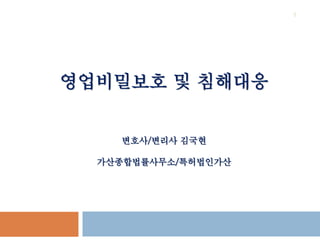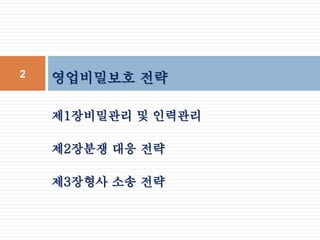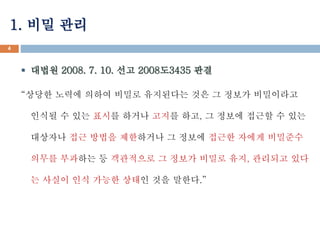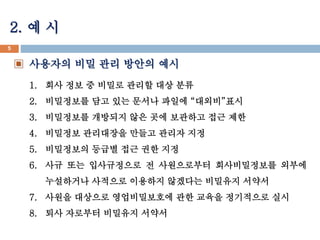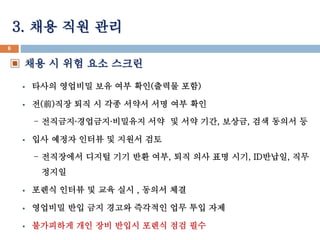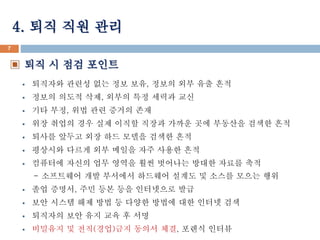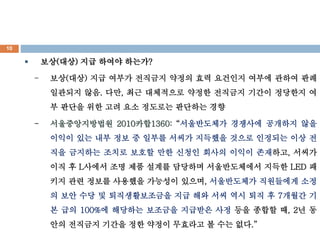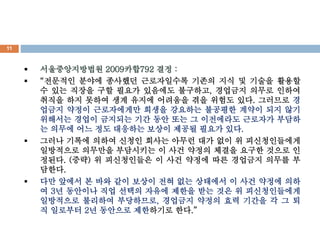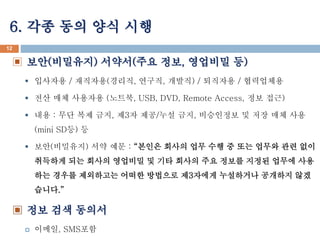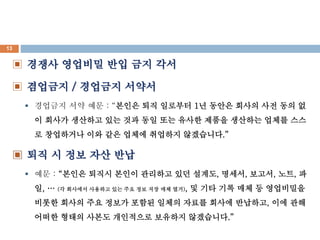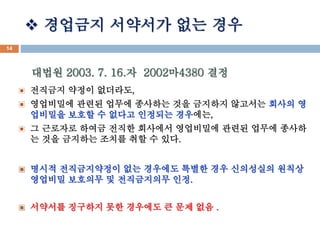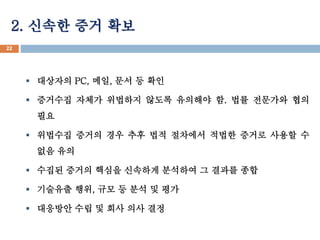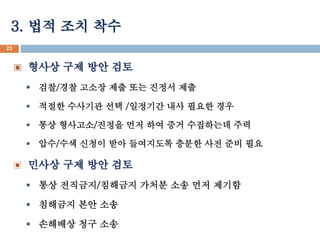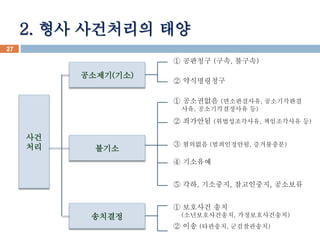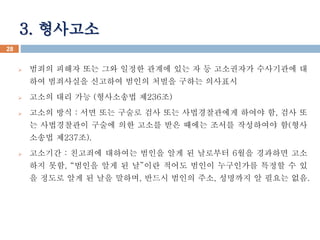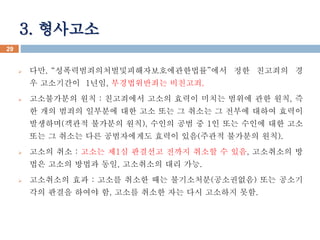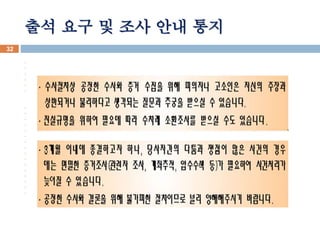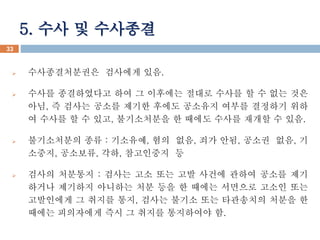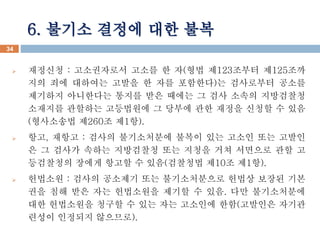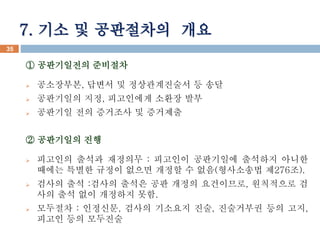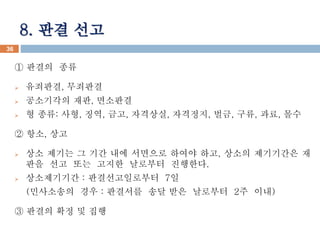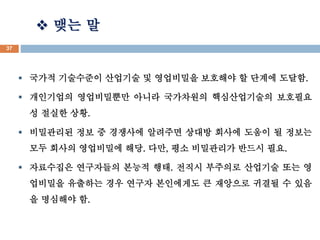?????? ? ???? ??
- 1. ?????? ? ???? ???/??? ??? ?????????/?????? 1
- 2. 2 ?????? ?? ?1????? ? ???? ?2??? ?? ?? ?3??? ?? ??
- 3. 3 ?1? ???? ? ????
- 4. 1. ?? ?? 4 ? ??? 2008. 7. 10. ?? 2008?3435 ?? Ī░??? ??? ??? ??? ????? ?? ? ??? ????? ??? ? ?? ??? ??? ??? ??, ? ??? ??? ? ?? ???? ?? ??? ????? ? ??? ??? ??? ???? ??? ???? ? ????? ? ??? ??? ??, ???? ?? ? ??? ?? ??? ??? ?? ???.Ī▒
- 5. 2. ? ? ? ???? ?? ?? ??? ?? 1. ?? ?? ? ??? ??? ?? ?? 2. ????? ?? ?? ??? ??? Ī░???Ī▒?? 3. ????? ???? ?? ?? ???? ?? ?? 4. ???? ????? ??? ??? ?? 5. ????? ??? ?? ?? ?? 6. ?? ?? ?????? ? ?????? ??????? ??? ????? ???? ???? ???? ???? ??? 7. ??? ???? ??????? ?? ??? ????? ?? 8. ?? ???? ???? ??? 5
- 6. 3. ?? ?? ?? 6 ? ?? ? ?? ?? ??? ? ??? ???? ?? ?? ??(??? ??) ? ?(Ū░)?? ?? ? ?? ??? ?? ?? ?? - ?????????????? ?? ? ?? ??, ???, ?? ??? ? ? ?? ??? ??? ? ??? ?? - ????? ??? ?? ?? ??, ?? ?? ?? ??, ID???, ?? ??? ? ??? ??? ? ?? ?? , ??? ?? ? ???? ?? ?? ??? ???? ?? ?? ?? ? ????? ?? ?? ??? ??? ?? ??
- 7. 4. ?? ?? ?? 7 ? ?? ? ?? ??? ? ???? ??? ?? ?? ??, ??? ?? ?? ?? ? ??? ??? ??, ??? ?? ??? ?? ? ?? ??, ?? ?? ??? ?? ? ?? ??? ?? ?? ??? ??? ??? ?? ???? ??? ?? ? ??? ??? ?? ?? ??? ??? ?? ? ???? ??? ?? ??? ?? ??? ?? ? ???? ??? ?? ??? ?? ???? ??? ??? ?? - ????? ?? ???? ???? ??? ? ??? ??? ?? ? ?? ???, ?? ?? ?? ????? ?? ? ?? ??? ?? ?? ? ??? ??? ?? ??? ?? ? ???? ?? ?? ?? ? ?? ? ???? ? ??(??)?? ??? ??, ??? ???
- 8. 5. ??(??)?? ?? ? ??? ? ???? + ????? ??? ??? ?? ??? ???? ?? ?? ?? ? ??? ??? ?? ????? ???? ?????? ??? ??? ?? ? ?,Ī░????Ī▒? ?? ?? ??? ???? ?? ?? ??? ? ?? ? ???????? 2009??792 ?? : Ī░???? ???? ??? ?? ?? ? ?? ???? ??? ???? ?? ???, ? ??? ??? ????? ? ?? ????? ??? ?? ?? ?? ???? ???? ??? ?? ?3 ??? ???? ??? ??? ???? ?? ????. (??) (???? ? ??? ???? ???? ??? ??? ?? ?? ?? ??? ?? ??? ????? ??? ??? ?????? ??? ??? ??? ??? ??? ?.)Ī▒ 8
- 9. ? ?? ? ???????? 2009??792 ?? : Ī░ ???? ?? ??? ???? ? ???? ??? ?? ??? ??? ? ?? ???? ?? ?? ? ??? ? ?? ???? ???? ??? ??? ??? ??. (??) ???? ??? ????? ??? ?? ?? ?? ?? ?? ??? ??? ???? ??? ?? ? ??? ????. ? ???? ? ?????? ?? ? ??? ?????, ??? ???? ? ?????? ???? ????? ? ??? ??? ????ĪŁ Ī▒ 9
- 10. ? ??(??) ?? ??? ???? - ??(??) ?? ??? ???? ??? ?? ???? ??? ??? ?? ???? ??. ??, ?? ????? ??? ???? ??? ???? ? ? ??? ?? ?? ?? ???? ???? ?? - ???????? 2010??1360: Ī░?????? ???? ???? ?? ??? ?? ?? ?? ? ??? ??? ???? ??? ???? ?? ? ?? ???? ??? ??? ?? ??? ??? ??? ????, ??? ?? ? L??? ?? ?? ??? ???? ??????? ??? LED ? ?? ?? ??? ???? ???? ???, ?????? ????? ?? ? ?? ?? ? ???????? ?? ?? ?? ?? ?? ? 7??? ? ? ?? 100%? ???? ???? ???? ?? ?? ??? ?, 2? ? ?? ???? ??? ?? ??? ???? ? ?? ??.Ī▒ 10
- 11. ? ???????? 2009??792 ?? : ? Ī░???? ??? ???? ?????? ??? ?? ? ??? ??? ? ?? ??? ?? ??? ???? ????, ???? ??? ??? ??? ?? ??? ?? ??? ???? ?? ??? ??. ???? ? ??? ??? ?????? ??? ???? ???? ??? ?? ?? ???? ??? ???? ?? ?? ?? ? ????? ???? ??? ? ??? ?? ?? ???? ??? ??? ??? ??. ? ??? ??? ??? ??? ??? ??? ?? ?? ? ??????? ????? ???? ????? ? ?? ??? ??? ??? ??? ? ???. (??) ? ?????? ? ?? ??? ?? ???? ??? ? ???. ? ?? ??? ? ?? ?? ??? ?? ?? ???? ? ?? ??? ?? ? 3? ???? ?? ??? ??? ??? ?? ?? ? ??????? ????? ???? ?????, ???? ??? ?? ??? ? ? ? ? ???? 2? ???? ????? ??.Ī▒ 11
- 12. 6. ?? ?? ?? ?? 12 ? ??(????) ???(?? ??, ???? ?) ? ???? / ????(???, ???, ???) / ???? / ????? ? ?? ?? ???? (???, USB, DVD, Remote Access, ?? ??) ? ?? : ?? ?? ??, ?3? ??/?? ??, ????? ? ?? ?? ?? (mini SD?) ? ? ??(????) ?? ?? : Ī░??? ??? ?? ?? ? ?? ??? ?? ?? ???? ?? ??? ???? ? ?? ??? ?? ??? ??? ??? ?? ?? ??? ????? ??? ???? ?3??? ????? ???? ?? ???.Ī▒ ? ?? ?? ??? ? ???, SMS??
- 13. 13 ? ??? ???? ?? ?? ?? ? ???? / ???? ??? ? ???? ?? ?? : Ī░??? ?? ???? 1? ??? ??? ?? ?? ? ? ??? ???? ?? ?? ?? ?? ??? ??? ???? ??? ?? ? ????? ?? ?? ??? ???? ?????.Ī▒ ? ?? ? ?? ?? ?? ? ?? : Ī░??? ??? ??? ???? ?? ???, ???, ???, ??, ? ?, ĪŁ (? ???? ???? ?? ?? ?? ?? ?? ??), ? ?? ?? ?? ? ????? ??? ??? ?? ??? ??? ??? ??? ??? ????, ?? ?? ??? ??? ??? ????? ???? ?????.Ī▒
- 14. ? ???? ???? ?? ?? 14 ??? 2003. 7. 16.? 2002?4380 ?? ? ???? ??? ????, ? ????? ??? ??? ???? ?? ???? ???? ??? ? ???? ??? ? ??? ???? ????, ? ? ???? ??? ??? ???? ????? ??? ??? ??? ? ?? ???? ??? ?? ? ??. ? ??? ??????? ?? ???? ??? ?? ????? ??? ???? ???? ? ?????? ??. ? ???? ???? ?? ???? ? ?? ?? .
- 15. ? ?? ??? ?? - ??? ?? 15 ???????? 2008? ?? : ** ???? : X? 2002? A??? ??? ? ???? ?? ??? 'A? ???' ????? ????, 2007? ????? ???. X? ???? ?? ?? ??? ??? ?? ??? ?? ??. ** ????: "? ??? 5?? ??? ??? ?? ?? ?? ?? ??? ??? ??? ????"? "??? ?? ??? ???? ??(╝sČ©)? ?? 2?? ?? ??? ??? ? ??"? ???? ??? ????. ** ????? ???? ?? ??? ? ??? ???? ?? ??.
- 16. ? ?? ?? - ??????? ??? ?? 16 ?????? 2007? ??: ? ??? ??: ??? ????? ??? ?? ?? ? 1? ???? ?? 5 km ?? ??? ????? ???? ???? ??? ??. ??? 5?? ?? ????? ???. ? ????: ????? ?? ? ??? 100m ?? ??? ????? ?? ? ?????, ? ???? ?????? ??? ? ???. ? ??: ? ???? ??? ??. ?? ?? 1. ????? ??? ??? ???? ??? ???? ????? ?? ? ??? ??? ??? ?? ??? ??? ?? ? ??. 2. ????? ???? ??? ???? ???. ?????? ??? ? ?? ??? ? ??. 3. ???? ???? ??? ??? ?? ??. ??????? ???? ?? ???.
- 17. ? ??? ?? ©C ???? ?? ??? ?? 17 ?????? 2007? ?? : ** ????: ????, ??? ??, ??? ??, ? ??? ?? ??, ??? ?? ??, ???, ???? ??, ?? ? ?????, ??? ??????? ????? ?? ?? ????? ??. ** ???? ???? ?? ???? ? ??? ??? ?? ??? ???? ? ??? ??, ??, ????? ???? ?? ???? ??????? ??? ??? ??? ???? ? ? ?? ?? ** ????: ???? ??? ??? ???? ?? ???? ????? ?? ?? ?? ??? Ī«????? ????? ??Ī»?? ???????? ?? ? ??? ????? ????? ? ? ??. ????.
- 18. ? ?? ?? ©C ??? ??????? ?? ?? 18 ?????? 2007? ??: ??????? ???? ???? ????? ?? ??? ????? ??? ???? ? ??, ???? ?? ????? ?? ??? ?? ???? ??? ???? ???? ??? ????? ??? ????? ?? ? ?? ???, ???? ??? ???? ? ? ???? ??? ?? ??? ?? ????, ?? ?? ?? ?????? ???? ? ??? ???? ???? ???? ??? ????, ???? ??? ??? ? ??, ????? ????? ? ?? ??, ???? ?? ??? ?? ??, ???? ?? ? ?? ????? ???? ???? ????? ? ???, ?? ??? ???? ??? ??????? ???? ?? ??? ???? ??? ? ??? ?? ???? ?? ???? ???? ? ??? ?? ?? ???? ? ?? ?????? ??????? ??? ??? ???? ?? ???? ? ? ???.
- 19. ? ??? ?? ? ????? ???? ??? ???? ???? ???? ???? ?? ?? ? ??? ??? ??? ? ???? ? ??? ???? ???? ?? ???? ???? ??? ??? ???? ? ?????? ???? ?? ?? ?? ? ?? ????? ? ??? ??? ?? ??? ???? ?? ???? ? ???? ???? ???? ??? ?? 19
- 20. 20 ?2? ?? ?? ??
- 21. 1. ??? ?? 21 ? ?????, ?????, ?? ???, ?????, IT ??? ? ?? TFT ?? ? ???? ?? ???, ???? ???? ?? ?? ? ??? ?? ?? ? ?? ??? ???? ??? ??? ??? ??? ? ??? ???? ???? ?? ??? ?? ??? ??? ?? ?? ? ???? ??? ?? ?? ??? ??
- 22. 2. ??? ?? ?? 22 ? ???? PC, ??, ?? ? ?? ? ???? ??? ???? ??? ???? ?. ?? ???? ?? ?? ? ???? ??? ?? ?? ?? ???? ??? ??? ??? ? ?? ?? ? ??? ??? ??? ???? ???? ? ??? ?? ? ???? ??, ?? ? ?? ? ?? ? ???? ?? ? ?? ?? ??
- 23. 3. ?? ?? ?? 23 ? ??? ?? ?? ?? ? ??/?? ??? ?? ?? ??? ?? ? ??? ???? ?? /???? ?? ??? ?? ? ?? ????/??? ?? ?? ?? ????? ?? ? ??/?? ??? ?? ????? ??? ?? ?? ?? ? ??? ?? ?? ?? ? ?? ????/???? ??? ?? ?? ??? ? ???? ?? ?? ? ???? ?? ??
- 24. 4. ????? 24 ? ???? ???? ??? ??????? ?? ? ?????? ????? ????, ??? ?? ?? ?? ?? ? ?? ??? ?? ??? ???? ?? ???? ? ?? ? ??? ??? ??? ????? ?? ??? ?? ? ?????? ??? ? ??? ?? ? ?? ?? ?? ? ?? ? ?? ???? ?? ? ?? ?? ? ??? ???: ???, ????, ?? ???, MP3 ? ? ??? ?? ?? ?? ? ??? ? ????? ?? ?? ?? ?? ? ??? ??? ??? ? ?? ? ?? ?? ??? ??
- 25. 25 ?3? ?? ?? ??
- 26. 1. ???? ??? ?? ó┘ ??? ?? ? ??? ??? ?? ??? ?? ??? ??, ??? ???? ???? ? ? ????? ??? ?? ? ??? ?? : ??, ??, ??, ??, ?? ? ó┌ ????? ?? ? ???? ? ??, ?? (????, ???? ??) ? ??? ????? ???? ???? ?? ??? ??? ??? ?? ? ?? ??? ???. ó█ ??? ???? ó▄ ???? 26
- 27. 2. ?? ????? ?? ?? ?? ????(??) ??? ???? ó┘ ???? (??, ???) ó┌ ?????? ó┘ ????? (??????, ?????? ??, ???????? ?) ó┌ ???? (???????, ?????? ?) ó█ ???? (??????, ?????) ó▄ ???? ó▌ ??, ????, ?????, ???? ó┘ ???? ?? (????????, ????????) ó┌ ?? (????, ??????) 27
- 28. 3. ???? ? ??? ??? ?? ?? ??? ??? ?? ? ? ????? ????? ? ?? ????? ???? ??? ??? ??? ???? ? ??? ?? ?? (????? ?236?) ? ??? ?? : ?? ?? ??? ?? ?? ??????? ??? ?, ?? ? ? ?????? ??? ?? ??? ?? ??? ??? ????? ?(?? ??? ?237?). ? ???? : ???? ???? ??? ?? ? ???? 6?? ???? ?? ?? ??, Ī░??? ?? ? ?Ī▒?? ??? ??? ????? ??? ? ? ? ??? ?? ? ?? ???, ??? ??? ??, ???? ? ??? ??. 28
- 29. 3. ???? ? ??, Ī░???????????????????Ī▒?? ?? ???? ? ? ????? 1??, ??????? ????. ? ?????? ?? : ????? ??? ??? ??? ??? ?? ??, ? ? ?? ??? ???? ?? ?? ?? ? ??? ? ??? ??? ??? ????(??? ???? ??), ??? ?? ? 1? ?? ??? ?? ?? ?? ? ??? ?? ?????? ??? ??(??? ???? ??). ? ??? ?? : ??? ?1? ???? ??? ??? ? ??, ????? ? ?? ??? ??? ??, ????? ?? ??. ? ????? ?? : ??? ??? ?? ?????(?????) ?? ??? ?? ??? ??? ?, ??? ??? ?? ?? ???? ??. 29
- 30. 4. ?????, ???? ?? ??? ? ? ? ? ? ? ? ? ? ? ? ? ? ? ? ? ? ? ? ? ? ? 30
- 31. 4. ?????, ???? ?? ??? ? ? ? ? ? ? ? ? ? ? ? ? ? ? ? ? ? ? ? ? ? ? 31
- 32. ?? ?? ? ?? ?? ?? ? ? ? ? ? ? ? ? ? ? ? ? ? ? ? ? ? ? ? ? ? ? 32
- 33. 5. ?? ? ???? ? ???????? ???? ??. ? ??? ?????? ?? ? ???? ??? ??? ? ? ?? ?? ??, ? ??? ??? ??? ??? ???? ??? ???? ?? ? ??? ? ? ??, ?????? ? ??? ??? ??? ? ??. ? ?????? ?? : ????, ?? ??, ?? ??, ??? ??, ? ???, ????, ??, ????? ? ? ??? ???? : ??? ?? ?? ?? ??? ??? ??? ?? ??? ???? ???? ?? ?? ? ??? ???? ??? ?? ????? ? ??? ??, ??? ??? ?? ????? ??? ? ??? ????? ?? ? ??? ????? ?. 33
- 34. 6. ??? ??? ?? ?? ? ???? : ?????? ??? ? ?(?? ?123??? ?125?? ?? ?? ???? ??? ? ?? ????)? ????? ??? ???? ????? ??? ?? ??? ? ?? ??? ????? ???? ???? ????? ? ??? ?? ??? ??? ? ?? (????? ?260? ?1?). ? ??, ??? : ??? ?????? ??? ?? ??? ?? ??? ? ? ??? ??? ????? ?? ??? ?? ???? ?? ? ????? ??? ??? ? ??(???? ?10? ?1?). ? ???? : ??? ???? ?? ??????? ??? ??? ?? ?? ?? ?? ?? ????? ??? ? ??. ?? ?????? ?? ????? ??? ? ?? ?? ???? ??(???? ??? ??? ???? ????). 34
- 35. 7. ?? ? ????? ?? ó┘ ?????? ???? ? ?????, ??? ? ??????? ? ?? ? ????? ??, ????? ??? ?? ? ???? ?? ???? ? ???? ó┌ ????? ?? ? ???? ??? ???? : ???? ????? ???? ??? ??? ??? ??? ??? ??? ? ??(????? ?276?). ? ??? ?? :??? ??? ?? ??? ?????, ????? ? ?? ?? ?? ???? ??. ? ???? : ????, ??? ???? ??, ????? ?? ??, ??? ?? ???? 35
- 36. 8. ?? ?? ó┘ ??? ?? ? ????, ???? ? ????? ??, ???? ? ? ??: ??, ??, ??, ????, ????, ??, ??, ??, ?? ó┌ ??, ?? ? ?? ??? ? ?? ?? ???? ??? ??, ??? ????? ? ?? ?? ?? ??? ???? ????. ? ?????? : ???????? 7? (????? ?? : ???? ?? ?? ???? 2? ??) ó█ ??? ?? ? ?? 36
- 37. ? ?? ? 37 ? ??? ????? ???? ? ????? ???? ? ??? ???. ? ????? ?????? ??? ????? ??????? ???? ? ??? ??. ? ????? ?? ? ???? ???? ??? ??? ??? ? ??? ?? ??? ????? ??. ??, ?? ????? ??? ??. ? ????? ????? ??? ??. ??? ???? ???? ?? ? ???? ???? ?? ??? ????? ? ???? ??? ? ?? ? ???? ?.

